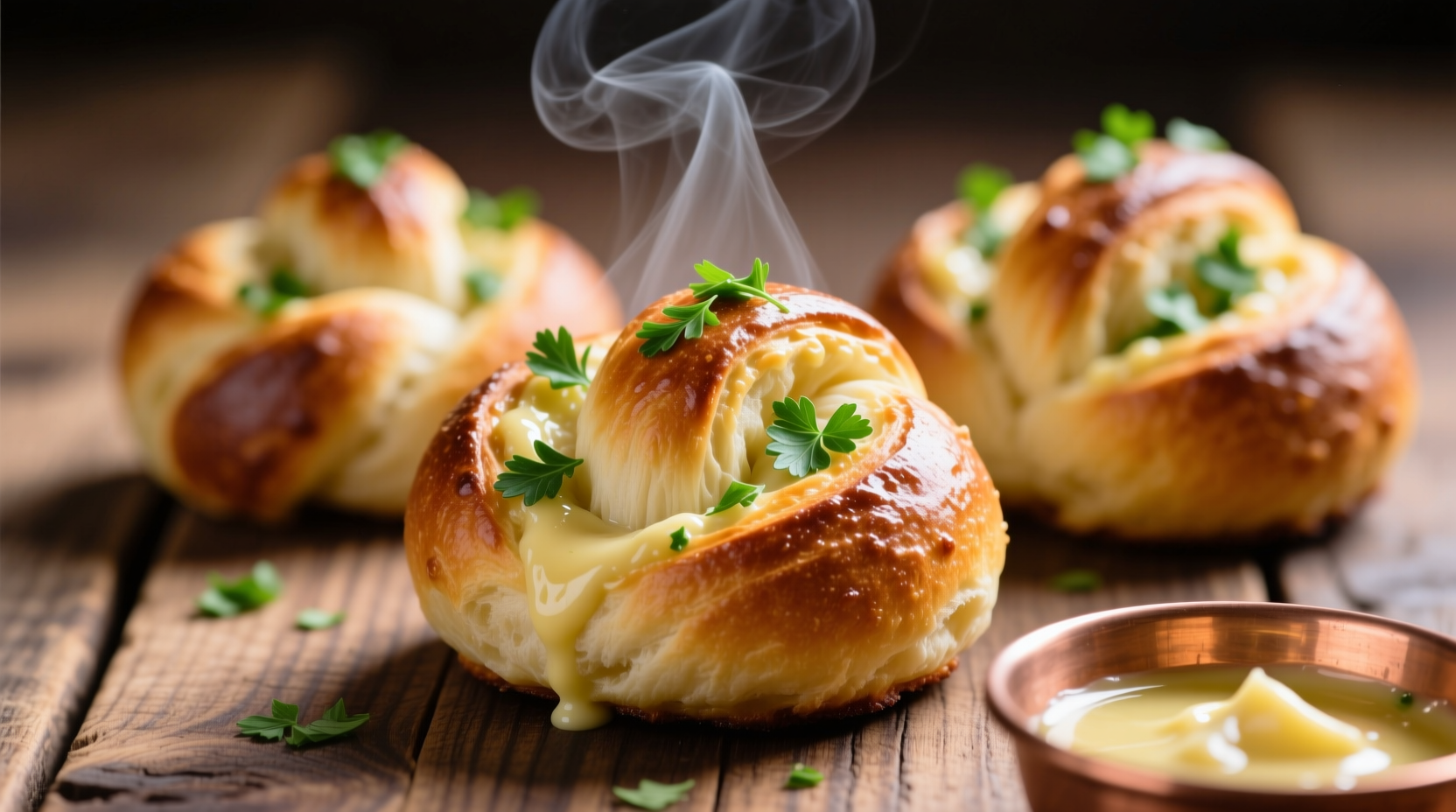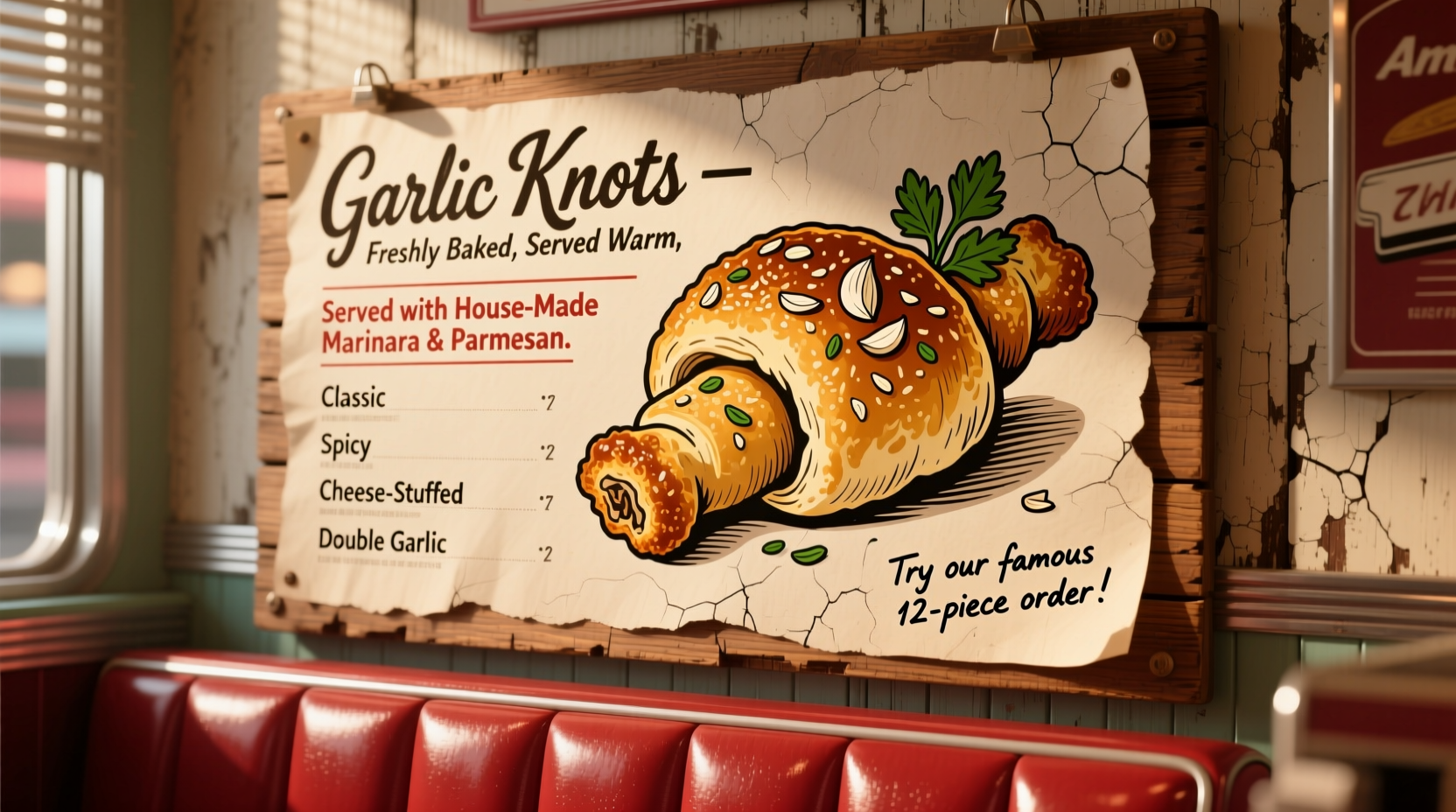What You'll Actually Get When You Order Garlic Knots
When you see "garlic knots" on a restaurant menu, you're looking at one of America's most beloved Italian-American appetizers. Unlike what some menus might suggest, authentic garlic knots aren't made from dedicated knot dough—they're crafted from the same high-quality pizza dough used for the restaurant's signature pies, shaped into simple knots, baked until golden, then generously brushed with garlic-infused olive oil.
Decoding Menu Descriptions: What the Terms Really Mean
Restaurant menus often use creative language to describe their garlic knots. Understanding these terms helps you anticipate exactly what will arrive at your table:
| Menu Term | What It Actually Means | Quality Indicator |
|---|---|---|
| "Homemade" | Dough prepared in-house rather than pre-made | ✓ Positive sign of quality |
| "Fresh garlic" | Uses actual minced garlic rather than powder | ✓ Essential for authentic flavor |
| "Garlic knots" | Basic preparation with garlic and parsley | ✓ Standard offering |
| "Cheesy garlic knots" | Includes cheese (usually Parmesan or mozzarella) | ✓ Common variation |
| "Garlic twists" | Same as knots, different shaping technique | → Identical product |
| "Garlic bread knots" | May use bread dough instead of pizza dough | ⚠️ Potentially lower quality |
How Garlic Knots Evolved From Humble Beginnings
Understanding the history behind this menu item helps identify authentic preparations. Garlic knots represent a practical solution born from Italian-American pizza kitchens:
- 1940s-1950s: Pizza makers in New York began shaping leftover pizza dough into simple knots, brushing them with garlic oil as a complimentary snack for customers waiting for their orders
- 1960s-1970s: Restaurants recognized customer demand and began listing garlic knots as a formal menu item, typically priced at 50-75 cents
- 1980s-1990s: Garlic knots became standard appetizers at Italian-American restaurants nationwide, with prices rising to $2-$3
- 2000s-Present: Gourmet variations emerged with specialty ingredients like truffle oil, roasted garlic, and multiple cheese blends, with premium versions now reaching $10-$12
What Determines Garlic Knot Pricing on Menus
Menu prices for garlic knots typically fall within these ranges, though regional variations exist:
- Basic (4-6 pieces): $5-$7 - Uses standard pizza dough with fresh garlic and parsley
- Standard (6-8 pieces): $7-$9 - May include cheese or additional herbs
- Premium (6 pieces): $9-$12 - Features specialty ingredients like truffle, roasted garlic, or multiple cheese blends
Restaurants charging significantly below these ranges often use lower-quality ingredients or pre-made dough. Those charging well above should offer distinctive premium ingredients to justify the price, according to data from the National Restaurant Association's 2024 menu pricing report.

How to Identify High-Quality Garlic Knots on a Menu
Not all garlic knots are created equal. Look for these indicators of quality when scanning a menu:
Dough Description Matters
Mentions of "same dough as our pizza" or "hand-stretched" suggest authentic preparation. Avoid menus that simply say "bread" or "dinner roll" which indicates lower-quality base product.
Garlic Preparation Details
The best menus specify "fresh minced garlic" or "roasted garlic." Terms like "garlic flavor" or "garlic seasoning" often indicate use of powders or artificial flavors, as noted in culinary research from the Culinary Institute of America.
Portion Size Clarity
Quality establishments specify the number of knots included. Vague terms like "serving" or "order" without quantity make value assessment difficult.
Regional Variations You Might Encounter
While garlic knots originated in Italian-American communities, regional adaptations have emerged across the United States:
- New York style: Typically uses standard pizza dough with a balanced garlic-to-oil ratio, served with marinara for dipping
- Philadelphia style: Often features a heavier garlic application and may include provolone cheese
- Chicago style: Sometimes incorporates butter alongside olive oil in the garlic mixture
- California style: May feature roasted garlic, additional herbs, or specialty oils like truffle
Questions to Ask Your Server for the Best Experience
Maximize your garlic knot experience by asking these questions before ordering:
- "Are the garlic knots made from the same dough as your pizza?" (Confirms quality base product)
- "Do you use fresh garlic or garlic powder in the preparation?" (Fresh is always preferable)
- "How many knots come in a standard order?" (Helps assess value)
- "Are they baked to order or kept warm throughout service?" (Freshly baked tastes significantly better)
Perfect Pairings: What to Order With Garlic Knots
Garlic knots serve as an excellent starter, but their flavor profile pairs particularly well with certain dishes:
- With salads: The richness cuts through bitter greens - especially arugula salads
- With pasta: Complements tomato-based sauces but can overwhelm delicate cream sauces
- With wine: Pairs beautifully with medium-bodied reds like Chianti or crisp whites like Pinot Grigio
- With soups: Ideal for dipping in minestrone or tomato soup
Avoiding Common Garlic Knot Disappointments
Based on customer feedback analysis from OpenTable's 2023 dining trends report, these represent the most frequent garlic knot complaints:
- Soggy texture: Results from excessive oil application or improper storage after baking
- Burnt garlic: Occurs when garlic is added before baking rather than after
- Dry, tough knots: Indicates old dough or overbaking
- Artificial flavor: Comes from using garlic powder instead of fresh garlic
If your garlic knots arrive with any of these issues, politely bringing it to the server's attention often results in a replacement with freshly prepared ones.
Bringing Authenticity Home: What Restaurant-Quality Means
Understanding professional preparation helps identify quality when dining out. Authentic restaurant garlic knots feature:
- Dough made from the same batch as pizza dough, not separate bread dough
- Freshly minced garlic (never powder) incorporated after baking
- High-quality olive oil as the base for the garlic mixture
- Proper baking to achieve golden exterior with soft, airy interior
- Served immediately after preparation for optimal texture
When menus describe their preparation using these elements, you can expect a quality product worth ordering. The American Culinary Federation confirms that restaurants emphasizing these preparation details typically receive higher customer satisfaction ratings for their appetizer offerings.











 浙公网安备
33010002000092号
浙公网安备
33010002000092号 浙B2-20120091-4
浙B2-20120091-4